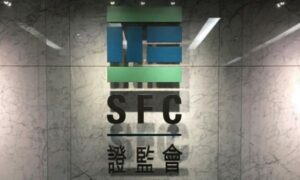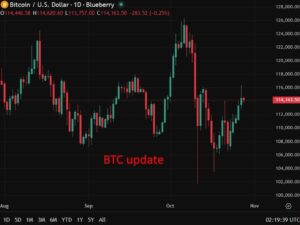
NFT marketplaces have become central to the digital economy, allowing creators, collectors, and businesses to buy, sell, and trade unique digital assets. For companies looking to enter this space, understanding the process of building an NFT marketplace is crucial. This guide will walk you through each step, from initial planning to launch, using clear language and practical insights. If you’re seeking NFT Development services, this comprehensive resource will help you make informed decisions and prepare for successful collaboration with a development partner.
What is an NFT Marketplace?
An NFT marketplace is a digital platform where users can create, buy, sell, and trade NFTs — unique digital tokens that represent ownership of a specific item or piece of content. Unlike cryptocurrencies such as Bitcoin or Ethereum, NFTs are non-fungible, meaning each token is unique and cannot be exchanged on a one-to-one basis.
NFT marketplaces act as intermediaries, providing a secure environment for transactions and offering tools for creators to mint their digital assets and for buyers to browse and purchase NFTs.
Why Build an NFT Marketplace?
The NFT market has grown rapidly, with billions of dollars in transactions recorded within a few years. There are several reasons why businesses and entrepreneurs choose to build NFT marketplaces:
- Monetization Opportunities: Marketplaces generate revenue through transaction fees, listing fees, premium services, and advertising.
- Direct Access to Creators and Collectors: By owning a marketplace, businesses can build a community and foster direct engagement.
- Control Over Platform Features: Customize the marketplace to suit specific niches or industries.
- Brand Recognition: Establish your brand as a leader in the digital collectibles and blockchain space.
- Future-Proofing: NFTs are expected to play a significant role in digital ownership and commerce moving forward.
Understanding NFT Development Services
NFT Development services encompass the technical and strategic processes involved in creating NFT platforms. These services typically include:
- Blockchain development and integration
- Smart contract programming
- Frontend and backend development
- Wallet and payment gateway integration
- UI/UX design
- Testing and security audits
- Ongoing maintenance and support
Partnering with a professional NFT Development company can simplify the process and ensure your marketplace is secure, scalable, and user-friendly.
Key Features of an NFT Marketplace
Before diving into development, it’s important to understand the features that make an NFT marketplace functional and attractive to users:
- User Registration and Profiles: Allow users to create accounts, manage their profiles, and track their activity.
- NFT Minting: Enable creators to upload digital assets and mint NFTs with metadata.
- Listing and Sales: Support fixed-price sales, auctions, and offers.
- Search and Filters: Help users find NFTs by category, price, creator, or popularity.
- Wallet Integration: Support popular crypto wallets for transactions.
- Payment Options: Include cryptocurrency payments and possibly fiat gateways.
- Ratings and Reviews: Allow users to rate sellers and NFTs.
- Admin Dashboard: Manage users, listings, transactions, and disputes.
- Notifications: Keep users informed about bids, sales, and updates.
- Security Features: Two-factor authentication, encryption, and anti-fraud measures.
Step 1: Defining Your Niche and Target Audience
The NFT market is broad, covering art, music, gaming, virtual real estate, collectibles, and more. Defining a clear niche helps differentiate your marketplace and attract a loyal user base. Consider the following when defining your niche:
- Industry Focus: Will your marketplace cater to digital artists, gamers, musicians, or another group?
- User Demographics: Age, location, interests, and tech-savviness of your potential users.
- Type of NFTs: Are you focusing on 2D art, 3D models, audio files, or virtual items?
- Unique Selling Proposition: What makes your marketplace different from existing platforms?
A well-defined niche allows you to tailor features and marketing strategies effectively.
Step 2: Market Research and Competitor Analysis
Conducting thorough market research helps you understand current trends, user expectations, and competitor strengths and weaknesses. Key steps include:
- Analyzing Top Marketplaces: Study platforms like OpenSea, Rarible, Foundation, and others.
- Identifying Gaps: Look for underserved niches or feature gaps.
- User Feedback: Review comments, forums, and social media to learn what users want.
- Pricing Models: Understand how competitors charge fees and monetize.
This research informs your business model and feature prioritization.
Step 3: Planning Your NFT Marketplace
Planning involves setting clear goals, timelines, and budgets. Important aspects include:
- Feature Roadmap: Decide which features are essential for launch and which can be added later.
- Monetization Strategy: Choose between transaction fees, listing fees, premium memberships, or advertising.
- Technology Stack: Decide on frontend, backend, blockchain, and database technologies.
- Team and Resources: Identify developers, designers, and blockchain experts required.
- Legal Framework: Plan for compliance with intellectual property laws, anti-money laundering (AML), and know your customer (KYC) regulations.
A detailed plan reduces risks and keeps the project on track.
Step 4: Selecting the Blockchain Platform
Choosing the right blockchain is a critical decision that affects cost, speed, security, and user experience. Here are some popular options:
Ethereum
- Pros: Largest NFT ecosystem, strong developer community, robust smart contract support.
- Cons: High gas fees, network congestion can delay transactions.
Polygon (Matic)
- Pros: Layer 2 solution for Ethereum, low fees, faster transactions.
- Cons: Smaller user base compared to Ethereum.
Solana
- Pros: High throughput, low fees, growing ecosystem.
- Cons: Less mature infrastructure, occasional network outages.
Binance Smart Chain (BSC)
- Pros: Low fees, fast transactions.
- Cons: Centralization concerns, smaller NFT community.
Others
- Flow (used by NBA Top Shot), Tezos, Avalanche, and more.
Consider your target audience, transaction volume, and budget when selecting a blockchain.
Step 5: Designing the User Interface and Experience
User experience (UX) and user interface (UI) design are crucial for attracting and retaining users. Focus on:
- User Onboarding: Simple signup and wallet connection process.
- Navigation: Clear menus, categories, and search options.
- Visual Design: Clean, modern look that reflects your brand.
- Mobile Compatibility: Responsive design for smartphones and tablets.
- Accessibility: Ensure the platform is usable by people with disabilities.
Wireframes and prototypes help visualize the design before development.
Step 6: Developing Smart Contracts
Smart contracts are self-executing contracts with the terms directly written into code. They handle NFT minting, sales, royalties, and auctions.
- Standards: Use ERC-721 for unique NFTs or ERC-1155 for semi-fungible tokens.
- Functionality: Include minting, transferring, bidding, and royalty payments.
- Security: Conduct audits to identify vulnerabilities and prevent hacks.
- Upgradeability: Consider using proxy contracts to allow future upgrades.
Smart contract development requires blockchain expertise and thorough testing.
Step 7: NFT Minting Process
Minting is the process of creating a new NFT by recording it on the blockchain. Your marketplace should allow:
- Uploading Assets: Support images, videos, audio, and 3D files.
- Adding Metadata: Title, description, attributes, and provenance.
- Minting Options: Immediate minting or lazy minting (mint on purchase to save gas fees).
- Bulk Minting: For creators who want to mint multiple NFTs at once.
Provide clear instructions and user-friendly tools for creators.
Step 8: Wallet Integration and Payment Gateways
Users need wallets to store NFTs and cryptocurrencies. Integrate popular wallets such as:
- MetaMask: Browser extension wallet widely used in Ethereum.
- WalletConnect: Allows connection to mobile wallets.
- Coinbase Wallet: User-friendly and trusted.
- Fortmatic / Magic: Email-based wallet login for ease of use.
For payments:
- Cryptocurrency: Accept payments in ETH, MATIC, SOL, or other tokens depending on your blockchain.
- Fiat Payments: Integrate gateways like Stripe or PayPal to onboard non-crypto users.
Security and privacy are paramount in wallet and payment integrations.
Step 9: Core Marketplace Functionalities
Develop the main features that will drive user interaction:
- NFT Browsing: Grid or list views, sorting by popularity, price, or date.
- Search Filters: Category, price range, creator, rarity, and more.
- Auction System: Timed auctions, reserve prices, and automatic bidding.
- Direct Sales: Fixed-price listings with “Buy Now” options.
- User Profiles: Display owned NFTs, sales history, and favorites.
- Social Features: Comments, likes, and sharing options.
- Notifications: Real-time alerts for bids, sales, and offers.
Ensure these features are intuitive and responsive.
Step 10: Testing and Quality Assurance
Testing ensures your marketplace is secure, reliable, and user-friendly:
- Functional Testing: Verify each feature works as intended.
- Security Audits: Perform smart contract audits and penetration testing.
- Load Testing: Simulate high traffic to assess performance.
- User Acceptance Testing (UAT): Collect feedback from beta users.
- Bug Fixing: Address issues before launch.
A thorough QA process minimizes risks and improves user trust.
Step 11: Deployment and Hosting
Deploy your smart contracts on the chosen blockchain mainnet. For hosting the marketplace:
- Cloud Providers: AWS, Google Cloud, or Azure offer scalability and reliability.
- Content Delivery Network (CDN): Improve load times globally.
- SSL Certificates: Secure your website with HTTPS.
- Backup and Recovery: Implement regular backups and disaster recovery plans.
Monitor uptime and performance continuously.
Step 12: Marketing and User Acquisition
A successful NFT marketplace needs users. Strategies include:
- Content Marketing: Publish blogs, tutorials, and case studies.
- Social Media: Engage on Twitter, Discord, Telegram, and Instagram.
- Influencer Collaborations: Partner with artists and creators to promote your platform.
- Community Building: Host AMA sessions, contests, and giveaways.
- Paid Advertising: Use Google Ads and social media ads targeted at crypto enthusiasts.
- Referral Programs: Incentivize users to invite others.
Track marketing ROI and adapt strategies accordingly.
Step 13: Post-Launch Maintenance and Updates
Launching your marketplace is just the beginning. Ongoing tasks include:
- Bug Fixes: Quickly address issues reported by users.
- Feature Enhancements: Add new features based on user feedback.
- Security Monitoring: Regularly audit and update smart contracts.
- Customer Support: Provide timely assistance via chat, email, or helpdesk.
- Community Engagement: Keep your users informed and involved.
Continuous improvement keeps your marketplace competitive.
Legal and Regulatory Considerations
NFT marketplaces operate in a complex legal environment. Important considerations:
- Intellectual Property: Verify that creators own the rights to their digital assets.
- Anti-Money Laundering (AML) and Know Your Customer (KYC): Implement processes to prevent illegal activities.
- Tax Compliance: Understand tax obligations related to NFT sales.
- Terms of Service and Privacy Policy: Clearly outline user rights and responsibilities.
- Jurisdictional Laws: Comply with laws in regions where you operate.
Consult legal experts to avoid costly issues.
Challenges in NFT Marketplace Development
Building an NFT marketplace involves overcoming several challenges:

Being aware of these challenges helps you prepare and respond effectively.
Emerging Trends in NFT Marketplaces
The NFT space is evolving rapidly. Key trends to watch:
- Cross-Chain Marketplaces: Support NFTs across multiple blockchains.
- Fractional Ownership: Allow users to buy shares of expensive NFTs.
- Integration with Metaverse: Virtual worlds incorporating NFTs as assets.
- AI-Powered Curation: Personalized recommendations and discovery.
- Sustainability Initiatives: Using eco-friendly blockchains and offsetting carbon footprints.
- Social Tokens and Membership NFTs: Access to exclusive content or communities.
Keeping up with trends helps maintain relevance.
How to Choose the Right NFT Development Company
Selecting a development partner is critical. Consider:
- Experience: Look for companies with proven NFT marketplace projects.
- Technical Skills: Blockchain, smart contracts, frontend/backend development.
- Customization Ability: Can they build features specific to your needs?
- Security Focus: Do they conduct audits and follow best practices?
- Support and Maintenance: Post-launch assistance is essential.
- Client Feedback: Check reviews and case studies.
A reliable partner like codezeros can guide you through the entire process.
Conclusion
Creating an NFT marketplace is a complex but rewarding venture. By carefully planning each step — from defining your niche and selecting the blockchain to developing smart contracts and marketing your platform — you can build a marketplace that attracts creators and collectors alike.
If you are ready to start your NFT marketplace journey or need expert assistance, consider partnering with codezeros. Our experienced team offers comprehensive NFT Development services to help you create a secure, scalable, and user-friendly marketplace tailored to your business goals.
Contact codezeros today to discuss your project and take the first step toward launching your NFT marketplace.
How to Create an NFT Marketplace: A Step-by-Step Guide 🖼️💻🚀 was originally published in Coinmonks on Medium, where people are continuing the conversation by highlighting and responding to this story.








